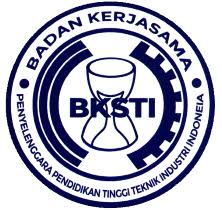Perancangan Identifikasi Bahaya di Area Feed Water System Boiler Menggunakan Metode HAZOP (Hazard and Operability Study)
DOI:
https://doi.org/10.30656/intech.v2i2.865Keywords:
Feed Water, HAZOP, Identification, NodeAbstract
Blast Furnace Complex is a new factory where there is no identification of potential hazards, the identification process of potential hazards also applies in the Feed water System area, which serves to continuously supply High Pressure Boiler Feed water as raw material for making Steam in Boilers. The process of identifying potential hazards aims to find out what potential hazards are found in the Feed water System area during work activities, so that preventive and risk control measures can be taken. This study uses the HAZOP (Hazard and Operability Study) method, which begins with determining the nodes, determining the operating parameters that occur at each node, then relying on guide words and the idea of the team to assess potential hazards, prevention that can be done and control efforts against potential hazards. . It was concluded from the results of the study that there were nine nodes with 11 operating deviations, of which all of the deviations were in the 9% Extreme Risk category, 18% for High Risk, 55% for Moderate Risk, and 18% Low Risk. for Extreme Risk is found at the Suction Pipe node HBF-CS4.0-11 with Less Pressure deviations caused by leakage on the HBF pipeline, with recommendations for patching at the point of leakage for emergency actions.
Downloads
References
Daramola, O., Stålhane, T., Sindre, G., & Omoronyia, I. (2011). Enabling hazard identification from requirements and reuse-oriented HAZOP analysis. In Managing Requirements Knowledge (MARK), 2011 Fourth International Workshop on (pp. 3–11). IEEE.
Johnson, R. W. (2010). Beyond-compliance uses of HAZOP/LOPA studies. Journal of Loss Prevention in the Process Industries, 23(6), 727–733.
Mohammadfam, I., Sajedi, A., Mahmoudi, S., & Mohammadfam, F. (2015). Application of Hazard and Operability Study (HAZOP) in evaluation of health, safety and environmental (HSE) hazards. International Journal of Occupational Hygiene, 4(2), 17–20.
Ramli, S. (2010). Sistem Manajemen Keselamatan dan Kesehatan Kerja OHSAS 18001. Jakarta: Dian Rakyat.
Wang, F., Gao, J., & Wang, H. (2012). A new intelligent assistant system for HAZOP analysis of complex process plant. Journal of Loss Prevention in the Process Industries, 25(3), 636–642.









.png)
.png)
.png)



.png)

.png)
